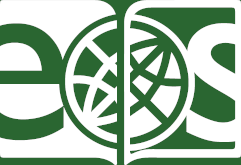Tartaglia’s explicit aim was to create a science that was strictly mathematical and of a deductive nature. As was mentioned above, the methodological and demonstrative paradigm Tartaglia followed in proposing a new science was represented in Tartaglia’s Nova scientia above all by Euclid’s Elements.1 In accordance with Aristotelian theory, Tartaglia begins his detailed analysis by proposing a series of principles which do not pertain to his theory directly but are of universal validity. These are what he refers to as the definitions with which he begins each book of the Nova scientia. The postulates and the axioms follow (only in the first book), the latter understood as an intuitively indubitable and evidently comprehensible truth. Finally, the “propositions” and the related “corollaries” emerge through a process of deductive reasoning. The frontispiece of the work provides also a sentence that Tartaglia took from Luca Pacioli’s De divina proportione2 and re-adapted to the purpose. While Pacioli refers to the platonic solids, Tartaglia changes the sentence by substituting these with the mathematical disciplines. According to Tartaglia’s variant of the motto, the mathematical disciplines are seen as the only method to understand “the reasons of things” and that “is open to every one.”3
Tartaglia’s intention to achieve the greatest possible abstraction by distancing himself as much as he could from the practical problems he was facing and from the experience of the bombardiers, and thus to construct an exact science based on the Euclidean model, was not entirely successful. The hybrid nature of the notions and suppositions which led Tartaglia to the construction of this new science found its place among the postulates and propositions of this science. Using the term “natural arguments” (ragioni naturali), Tartaglia introduces demonstrations which he is obviously unable to explain on a purely geometric level, and which in fact require observation and experience in order to be considered valid. Tartaglia himself was aware of the problem and invited the reader to follow his line of thought, even though this type of demonstration was not accepted by mathematicians (geometri). Furthermore, it could also appear paradoxical that a demonstration based on natural arguments was used for the most important proposition in the entire work, i.e., the one which reveals that the greatest range of shot is achieved when the piece of artillery is raised at an angle of 45 degrees:
To demonstrate this proposition, we use a natural argument.4, which is the following: that thing that transits from the smallest to the greatest and through all that is in-between necessarily transits through the equal. Or the following: if it happens to find the greatest and the smallest of any thing, it also happens to find the equal. It is true that this kind of argument is neither valid or accepted, nor conceded by the geometer, as is clearly demonstrated by the commentator5 on the fifteenth proposition of the third [book] of Euclid and, similarly, on the thirtieth [proposition] of the same [book]. Nevertheless, such conclusions are verified in [reference to] the things that are univocal in reality, but when they are ambiguous, such [arguments] are sometimes mendacious.6
Within a context characterized by only one possible solution to the problem (univocità), and where, consequently, as with the axioms, there can be no doubt about the truth, the natural argument is held to be valid because it implies that the conclusion of the argument must always turn out to be true. The obvious difficulty with this, as Tartaglia was well aware, illustrates the phase of the transition from acquired and accumulated experience within the sphere of a practical activity to the mathematical-theoretical treatment of the same subject, a process that constituted the basis for the Scientific Revolution of the Renaissance.
Footnotes
In her paper, Karin J. Ekholm analyzes not only the physical and mathematical methods, as in the following, but also Tartaglia’s algebraic approach, which he used in the final proposition of the second book. In particular, Ekholm is able to show how a plurality of methodological approaches was standard practice for those scholars, like Tartaglia, whose background included the culture of the Abaco schools. For more details, see Ekholm 2010.
For a suggestive reading of the frontispiece that shows perfectly Tartaglia’s awareness of his moving from practical to theoretical knowledge, see Pizzamiglio 2004, especially pages 45–46.
In the 1537 edition, Tartaglia defines the demonstration of this proposition as “Archimedean argumentation.” Karin Ekholm convincingly argued that Tartaglia’s choice of wording was related to Archimedes’ legendary skill as a machine builder. In Ekholm 2010, 197.
The commentator Tartaglia refers to is Johannes Campanus. In his commentary on proposition fifteen of the third book of Euclid’s Elements, Campanus develops an argument similar to that of Tartaglia and then concludes in the following way: “Est hoc notandum que non valet ista argumentatio. hoc transit a minori ad maius. et per omnia media. ergo per equale. nec ista contingit reperire maius hoc et minus eodem ergo contingit reperire equale. hoc autem sic patet.” From Adelardus and Johannes 1482, third book, proposition fifteen.
Tartaglia 1558, second book, 17r. This quotation is from page
